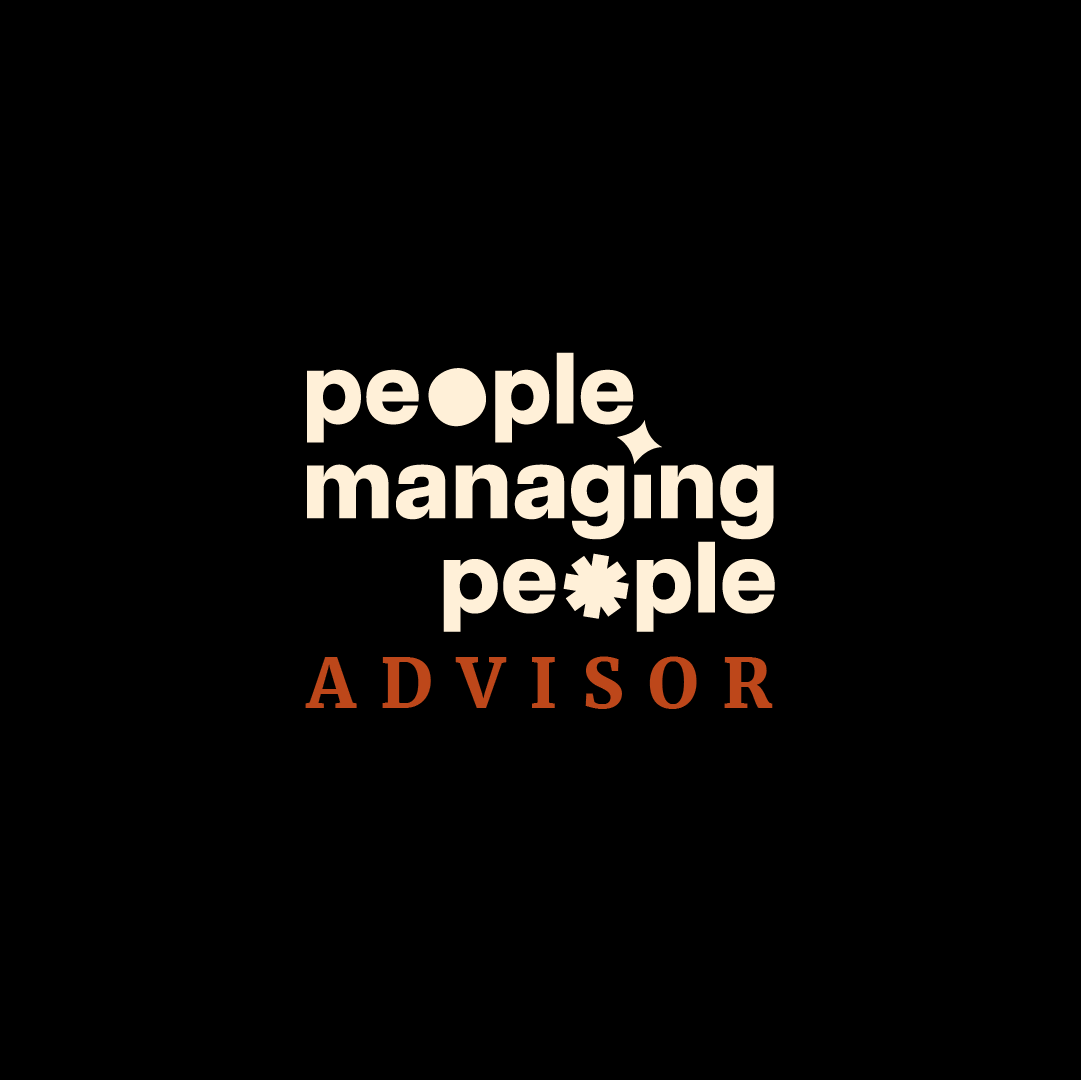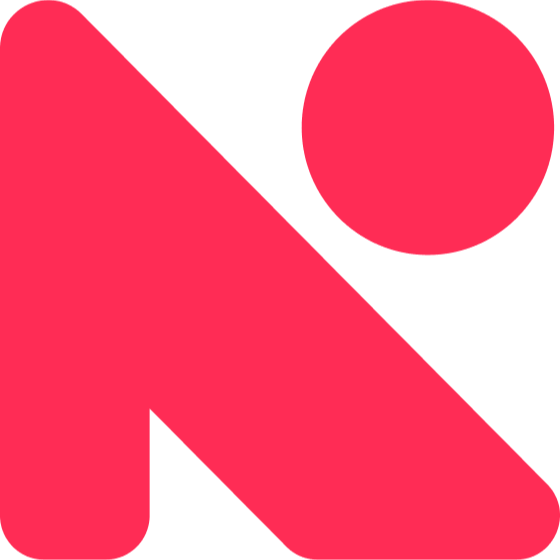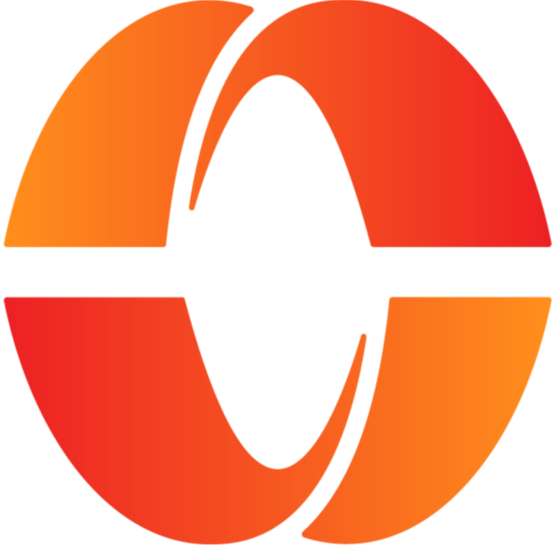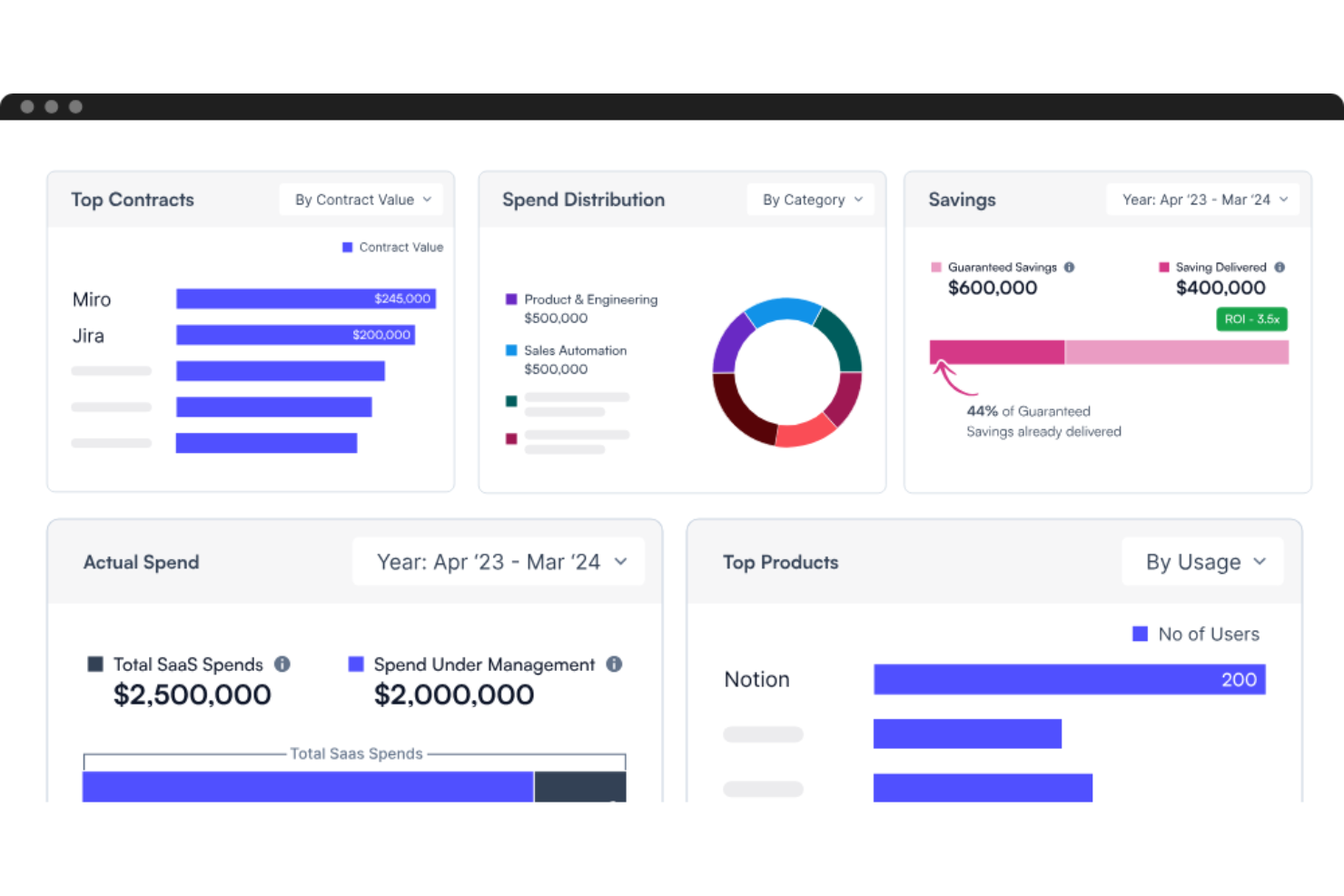10 Best SaaS Management Platform List
Here's my pick of the 10 best software from the 20 tools reviewed.
The best SaaS management platforms help you track app usage, control subscription costs, and maintain security—so you can get the most value from your software stack.
Without a centralized system, it’s easy for shadow IT, duplicate subscriptions, and unused licenses to drain budgets and create compliance risks. The right platform gives you full visibility into your SaaS ecosystem, automates license management, and helps you make data-driven decisions about your tech investments.
Drawing on my experience evaluating digital workplace tools, I’ve shortlisted the top SaaS management solutions that are intuitive, scalable, and built to improve operational efficiency.
In this guide, you’ll find platforms that simplify oversight, optimize spending, and ensure your apps are working as hard as you do.
Why Trust Our Software Reviews
We’ve been testing and reviewing HR management software since 2019. We’ve tested more than 2,000 tools for different HR management use cases and written over 1,000 comprehensive software reviews.
As HR experts ourselves, we know how critical and difficult it is to make the right decision when selecting software. We invest in deep research to help our audience make better software purchasing decisions.
Learn how we stay transparent & check out our software review methodology.
Best SaaS Management Platforms: Quick Comparison Chart
This comparison chart summarizes basic details about each of my top SaaS management platform selections. You can view pricing details and the availability of free trials or demos side-by-side to help you find the right SaaS product for your budget and business needs.
| Tool | Best For | Trial Info | Price | ||
|---|---|---|---|---|---|
| 1 | Best for optimizing SaaS spend with AI | Free demo available | Pricing upon request | Website | |
| 2 | Best for tailored financial solutions | Free plan available | From $25/month | Website | |
| 3 | Best for reducing SaaS wastage | Free demo available | Pricing upon request | Website | |
| 4 | Best for managing shadow applications | 30-day free trial | From $3/user/month (billed annually) | Website | |
| 5 | Best for automating SaaS provisioning tasks | Free demo available | Pricing upon request | Website | |
| 6 | Best for monitoring subscriptions and spending | 30-day free trial | From €1/employee/month + €10 base fee/month | Website | |
| 7 | Best for intuitive data security | Not available | Pricing upon request | Website | |
| 8 | Best for managed service providers (MSPs) | 14-free trial | From $0.49/user/month | Website | |
| 9 | Best for identity security in the cloud | Free demo available | Pricing upon request | Website | |
| 10 | Best for understanding app engagement | Free demo available | Pricing upon request | Website |
-

Native Teams
Visit WebsiteThis is an aggregated rating for this tool including ratings from Crozdesk users and ratings from other sites.4.9 -

Rippling
Visit WebsiteThis is an aggregated rating for this tool including ratings from Crozdesk users and ratings from other sites.4.8 -

Paylocity
Visit WebsiteThis is an aggregated rating for this tool including ratings from Crozdesk users and ratings from other sites.4.5
Overviews of the 10 Best SaaS Management Platforms
Here’s a brief description of each of the SaaS management platform vendors that showcases what each SaaS product does best. I’ve also included a screenshot of each to show you their user interface too.
Spendflo is a SaaS spend management platform that combines AI-powered software with expert procurement services to help businesses manage and optimize their software subscriptions. The platform provides tailored solutions for finance, procurement, and IT & security teams, aiming to reduce costs and improve efficiency.
The platform offers real-time visibility into all SaaS contracts, expenditures, and usage, allowing companies to monitor and manage their software assets. Automated procurement processes, including approval workflows and renewal management, also ensure that businesses can maintain up-to-date and cost-effective software stacks without the administrative burden.
Additionally, Spendflo's data-backed negotiations and contract management capabilities ensure that companies secure the best possible pricing and terms for their software purchases. Real-time analytics and dashboards also provide actionable insights into spending patterns and potential savings.
New Product Updates from Spendflo
Introducing Spendflo's Renewal Agent
Spendflo introduces its new AI-powered Renewal Agent to enhance procurement efficiency. It's designed to automate tracking of licenses, benchmarks, and spending insights. For more information, visit Spendflo's official site.
Slash is a financial technology platform designed to handle banking and expense management needs, particularly for SaaS management. It aims to provide customized solutions that move away from traditional banking models, offering businesses a modern way to manage their finances.
One of the reasons I picked Slash as a strong contender for a SaaS management platform is its focus on providing tailored financial solutions. It offers features like seamless fiat and crypto conversions and developer-friendly APIs, which can be a game-changer for businesses looking to manage multiple financial entities. These functionalities allow you to track expenses in real-time and automate transfers, making financial management a breeze.
Another standout feature is its security focus, which includes enhanced FDIC coverage and compliance with SOC2 Type II and PCI standards. This means your financial data is protected with top-notch security measures, giving you peace of mind.
Features include virtual accounts that make tracking finances straightforward, real-time analytics that offer immediate insights into your financial health, and customizable user controls that let you tailor the platform to meet your specific needs. These features are designed to enhance your financial management capabilities without the hassle of traditional banking systems. With Slash, you get a platform that adapts to your business, not the other way around.
Integrations include Google Sheets, Notion, Airtable, Email, Webhook, Amplitude, Zapier, Slack, Quickbooks, NetSuite, Xero, and Zoho.
Zluri is a data-driven SaaS management platform focused on app discovery, management, optimization and compliance. It helps you optimize spend by removing duplicate apps, highlighting underused tools and consolidating apps with overlapping functions.
Many IT tasks such as procurement, onboarding and renewals can be automated with Zluri. Security is enhanced through the removal of unsecured apps and the management of compliance risks.
Pricing is not publicly disclosed, but a free trial is available for organizations with fewer than 25 employees.
Zygon is a SaaS management platform designed to help IT and security teams manage user identities and application access across their organization. It offers tools to automate account provisioning, monitor access, and ensure compliance with security standards.
I like Zygon's workflow automation capabilities. It allows teams to set up custom workflows for tasks like access reviews and provisioning, reducing the need for manual intervention. This automation supports compliance efforts and ensures that access controls are consistently applied across all applications.
Additionally, the platform provides the ability to detect and manage shadow SaaS applications. It identifies unmanaged identities and unauthorized app usage, providing visibility into potential security risks. This feature helps organizations address access sprawl and maintain control over their SaaS environment.
Josys is a SaaS management platform designed to simplify IT operations for businesses of all sizes. It provides a 360° view of all SaaS applications and devices within an organization, enabling efficient management and control over IT assets. Josys focuses on reducing costs, mitigating risks, and ensuring compliance.
The platform offers comprehensive visibility into all SaaS applications, allowing organizations to easily track usage, identify shadow IT, and manage licenses effectively. Josys's workflow automation capabilities also help provisioning and de-provisioning processes, ensuring that employees have the necessary access from day one and that access is promptly revoked when employees leave the company.
Furthermore, the platform helps organizations control costs by providing detailed insights into license utilization and enabling quick identification of underused or redundant applications.
Josys integrates with a wide range of applications and services, including Microsoft Azure, Google Workspace, Salesforce, ServiceNow, Slack, Okta, Dropbox, Box, and Zoom.
LicenceOne is a SaaS management platform that helps you keep track of your software subscriptions and manage your spending. It provides you with a digital dashboard that displays all your apps and their usage. It also shows you how much you're spending and when your licenses are due for renewal.
The platform will notify you about inactive users, 'zombie subscriptions' (unused subscriptions that keep renewing), and other concerns related to your SaaS stack. You can manage users across your accounts from the system, making it easier to increase or decrease licenses without having to go in and out of each app individually.
In addition to helping you manage your subscriptions, the software also helps you manage your accounting. All of your invoices will be collected in the platform, making records keeping much simpler. You won't have to hunt around your email or log into every tool just to have your invoices on file.
Pricing starts at €1/employee/month plus a €10/base fee/month. A 30-day free trial is also available.
BetterCloud is a SaaS management platform that offers automated management, critical insights, and intuitive data security. The software allows you to monitor SaaS subscriptions and stay on top of key usage data across your organization.
With the help of BetterCloud, you can get alerts when issues arise, enforce password management and manage user profiles. You can also create customizable reports, using over 100 different attributes.
BetterCloud costs from $3/user/month. There is no free trial.
Augmentt Engage helps managed service providers ensure secure SaaS operations for their clients. The platform streamlines provisioning, simplifies daily user management and increases security.
The software can be managed from a single screen, offering a real-time, actionable view of how SaaS is being used across the organization. Augmentt Engage integrates with most PSA and RMM platforms.
Augment Engage costs from $0.49/user/month and a 14-free trial is offered.
SailPoint is an identity governance platform designed for the cloud. The platform solves SaaS-related challenges such as compliance, password management and analytics.
With SailPoint, it's easy to see who has access to specific tools and how they are being used. Users can manage their digital identities with confidence.
Pricing is not publicly available. There is no free trial.
Productiv is a SaaS management platform powered by application engagement analytics. This tool allows you to visualize your SaaS portfolio and evaluate the cost and effectiveness of particular apps.
The software collects and analyzes engagement insights to help you understand what SaaS applications are used for. Productiv also makes it easy to understand trends in usage.
Pricing is not disclosed publicly, but a 90-day free trial is available.
Other SaaS Management Platforms
Here are a few more worthwhile options that didn’t make my best SaaS management systems shortlist, but are still worth checking out:
- Zylo
For advanced analytics and workflows
- Vendr
For saving money on Saas
- Torii
An extensive range of integrations
- Snow
For comprehensive license management
- Rippling IT
For managing employee access
- Auvik
For identifying shadow IT
- ActivTrak
For improving worker productivity
- Certero for Cloud
For app discovery
- Binadox
For managing SaaS spending
- USU Software Asset Management
For detail software insights
Selection Criteria for SaaS Management Tools
When selecting the best SAAS management platform to include in this list, I considered common buyer needs and pain points like managing software spend and ensuring compliance. I also used the following framework to keep my evaluation structured and fair:
Core Functionality (25% of total score): To be considered for inclusion in this list, each solution had to fulfill these common use cases:
- Manage software spend
- Track software usage
- Automate SaaS renewals
- Ensure compliance
- Provide usage analytics
Additional Standout Features (25% of total score): To help further narrow down the competition, I also looked for unique features, such as:
- Customizable dashboards
- Advanced security controls
- AI-driven insights
- Vendor management
- Automated workflow creation
Usability (10% of total score): To get a sense of the usability of each system, I considered the following:
- Intuitive interface design
- Easy navigation
- Minimal learning curve
- Responsive design
- Accessibility features
Onboarding (10% of total score): To evaluate the onboarding experience for each platform, I considered the following:
- Availability of training videos
- Interactive product tours
- Access to templates
- Chatbot assistance
- Webinars and live demos
Customer Support (10% of total score): To assess each software provider’s customer support services, I considered the following:
- 24/7 support availability
- Multiple support channels
- Knowledge base access
- Response time
- Personalized support options
Value For Money (10% of total score): To evaluate the value for money of each platform, I considered the following:
- Competitive pricing
- Flexible payment plans
- Free trial availability
- Feature-to-price ratio
- Cost savings potential
Customer Reviews (10% of total score): To get a sense of overall customer satisfaction, I considered the following when reading customer reviews:
- Positive feedback trends
- Common complaints
- Satisfaction with support
- Ease of implementation
- Long-term user satisfaction
How to Choose SAAS Management Platform
It’s easy to get bogged down in long feature lists and complex pricing structures. To help you stay focused as you work through your unique software selection process, here’s a checklist of factors to keep in mind:
| Factor | What to Consider |
|---|---|
| Scalability | Will the platform grow with your company? Check if it supports your current and future user count and data volume. |
| Integrations | Does it connect with your existing tools? Verify compatibility with your current software stack to ensure smooth operations. |
| Customizability | Can you tailor the platform to fit your workflows? Look for options to adjust dashboards and reports according to your needs. |
| Ease of use | Is the interface intuitive? Ensure that your team can navigate the platform without extensive training or support. |
| Implementation and onboarding | How long will it take to get started? Consider the time and resources needed for setup, including any support or training provided by the vendor. |
| Cost | Does the pricing fit your budget? Compare the total cost of ownership, including hidden fees or additional charges for extra features or support. |
| Security safeguards | Are data protection measures in place? Look for encryption, access controls, and compliance with industry standards like GDPR. |
| Support availability | Is help readily accessible when needed? Evaluate the vendor’s support channels, response times, and availability to ensure you get assistance when required. |
What is a SaaS platform?
A SaaS platform is a type of software delivered over the Internet as ‘Software as a Service.’ Instead of residing on the user’s computer, the software is hosted in the cloud, where it can be accessed as required.
SaaS-based platforms are available for a wide range of applications, ranging from marketing to business management. Rather than purchase the application outright, users typically access the software through a pay-as-you-go model.
SaaS management is the increasingly important task of managing all the ‘Software as a Service’ applications used by an organization. This task involves ensuring that all cloud software being used is appropriately licensed, secure, and used to the best advantage.
Key Features
When selecting a SaaS management platform, keep an eye out for the following key features:
- Automated workflows: Streamline repetitive tasks, saving time and reducing manual errors.
- Spend tracking: Monitors software expenses to help optimize budget allocation.
- Compliance monitoring: Ensures software use aligns with industry regulations, reducing legal risks.
- Usage analytics: Provides insights into how software is used, aiding in decision-making and optimization.
- Vendor management: Simplifies interactions with software vendors, helping secure favorable terms.
- Customizable dashboards: Allow you to tailor data views to meet specific needs and preferences.
- Integration capabilities: Connects with existing tools to create a cohesive software environment.
- Security safeguards: Protects sensitive data with encryption and access controls.
- Reporting tools: Generate detailed reports for better visibility and informed decision-making.
- Subscription tracking: Keeps tabs on software subscriptions to avoid waste and optimize renewals.
Benefits
Implementing a SaaS management platform provides several benefits for your team and your business. Here are a few you can look forward to:
- Cost savings: By tracking software spending and optimizing usage, you can reduce unnecessary expenses.
- Improved efficiency: Automated workflows and reporting tools save time and reduce manual efforts for your team.
- Enhanced compliance: Compliance monitoring helps ensure your software use meets industry regulations, minimizing legal risks.
- Better decision-making: Usage analytics and reporting provide insights that support informed software investment decisions.
- Streamlined vendor interactions: Vendor management features simplify negotiations and contract management, securing better terms.
- Increased security: Security safeguards protect sensitive information, ensuring data integrity and privacy.
- Optimized software use: Subscription tracking and usage analytics help you make the most of your software investments.
Costs and Pricing of SaaS Management Platform
Selecting a SaaS management platform requires an understanding of the various pricing models and plans available. Costs vary based on features, team size, add-ons, and more. The table below summarizes common plans, their average prices, and typical features included in SaaS management platform solutions:
Plan Comparison Table for SaaS Management Platform
| Plan Type | Average Price | Common Features |
|---|---|---|
| Free Plan | $0 | Basic usage tracking, limited integrations, and community support. |
| Personal Plan | $5-$25/user/month | Usage analytics, basic reporting, and email support. |
| Business Plan | $25-$50/user/month | Advanced reporting, automated workflows, and priority support. |
| Enterprise Plan | $50-$100/user/month | Custom integrations, a dedicated account manager, and compliance monitoring. |
SaaS Management Platform FAQs
Here are some answers to common questions about the SaaS management platform:
How do SaaS management platforms help with cost savings?
SaaS management platforms help you track software usage and identify unused licenses, reducing wastage. They provide insights into spending patterns, allowing you to optimize your software investments. By automating renewals and managing subscriptions, these tools ensure you only pay for what you need.
What should I look for in SaaS management platform vendors?
When evaluating vendors, consider their integration capabilities with your existing tools. Check for features like automated workflows and compliance monitoring. Assess their customer support options and ensure they offer scalability to grow with your organization. Vendor transparency and pricing are also important factors.
How can SaaS management platforms help with compliance?
These platforms monitor software usage and ensure it aligns with industry regulations, reducing legal risks. They offer compliance tracking features that help you maintain necessary standards. By providing detailed reports, these tools keep your team informed about compliance status and potential issues.
What are the risks of shadow IT, and how do these platforms address them?
Shadow IT involves unauthorized software use, which can lead to security vulnerabilities. SaaS management platforms identify and track all software applications in use, reducing the risk of shadow IT. They provide visibility into software usage, helping your team enforce policies and maintain control.
How do SaaS management platforms support vendor management?
These platforms simplify vendor interactions by automating contract renewals and providing negotiation support. They track vendor performance and terms, ensuring you get the best deals. By centralizing vendor information, they help your team manage relationships effectively and optimize costs.
What role do analytics play in SaaS management platforms?
Analytics provide insights into software usage patterns, helping you make informed decisions about software investments. They identify trends and usage spikes, allowing you to adjust your licensing accordingly. By offering detailed reports, analytics support strategic planning and cost optimization efforts.
What’s Next:
If you're in the process of researching SaaS management platform, connect with a SoftwareSelect advisor for free recommendations.
You fill out a form and have a quick chat where they get into the specifics of your needs. Then you'll get a shortlist of software to review. They'll even support you through the entire buying process, including price negotiations.


























